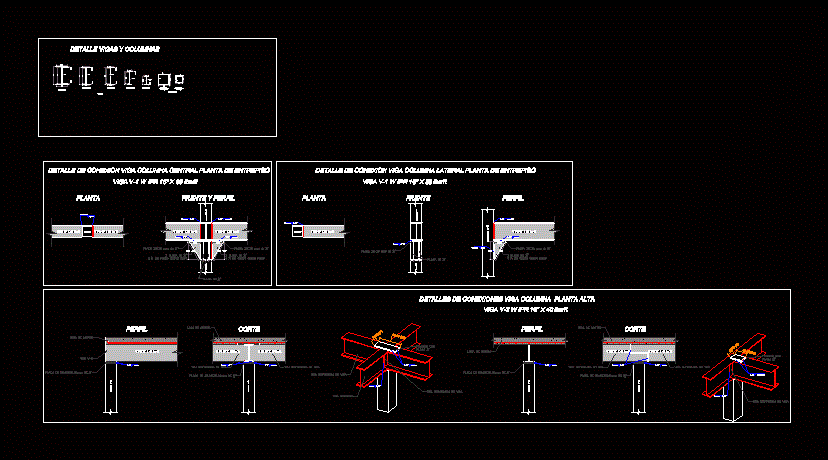
Apr 21, 2017 I just discuss here about how to draw beam reinforcement detailing with Autocad Watch another Structural Drawing Video Stair Reinforcement Detailing Drawing With Autocad https://youtu.be. Dynamic I-Beam (IPE) - Metric. AutoCAD, Rhino, Vector works, Sketchup, Revit and more; Upload. Sign up to our Free newsletter for exclusive offers on our 2D and 3D CAD models. I consent to having CAD Visuals Ltd collect my name and email address.
Use this procedure to create a structural beam tool and add it to a tool palette.

- Open the tool palette on which you want to add a tool.
- Create the tool:
If you want to… Then… create a tool from a structural member style in the Style Manager click Manage tabStyle & Display panelStyle Manager. Locate the style you want to copy, and drag it to the tool palette. Click OK to close the Style Manager. create a tool from a beam in the drawing select the beam, and drag it to the tool palette. copy a tool in the current palette right-click the tool, and click Copy. Right-click, and click Paste. copy a tool from another palette open the other tool palette, right-click the tool, and click Copy. Reopen the palette where you want to add the tool, right-click, and click Paste. copy a tool from the Content Browser open the Content Browser, and locate the tool you want to copy. Position the cursor over the i-drop handle, and drag the tool to the tool palette. - Right-click the new tool, and click Properties.
- Enter a name for the tool.
- Click the setting for Description, enter a description of the tool, and click OK.
The description displays in the tooltip when you select the tool from the tool palette, and describes the tool if you store it in a tool catalog in the Content Browser.
- Expand Basic General.
- Enter a description of the beams that you can create using this beam tool.
- If you do not want to use the layer assignments specified in the layer key style used in the drawing, specify a layer key and any layer key overrides.
- Select a structural member style, and select a style location, if not the current drawing.
The style provides the shape of the beam.
- Specify a value for Bound spaces:
If you want to… Then… allow the beam to be used as a bounding object for associative spaces select Yes. prevent the beam from being used as a bounding object for associative spaces select No. use the bounding setting from the beam style select By Style. - Specify a value for Trim automatically:
If you want… Then… the geometry of the beam to be automatically trimmed to any other structural members, other architectural objects, or linework to which it is logically connected select Yes. prevent the geometry of the beam from being trimmed automatically select No. use the trim setting from the beam style select By Style. Note: This setting affects only the structural member being added. Adding a new structural member will not change the geometry of an existing structural member, regardless of the setting for Trim automatically. - Expand Dimensions.
- Specify offsets:
If you want to… Then… offset the beam on its extruded axis at the start point of the beam enter a value for Start offset. A positive value shortens the beam on its axis, while a negative value lengthens the beam on its axis. offset the beam on its extruded axis at the endpoint of the beam enter a value for End offset. A positive value lengthens the beam on its axis, while a negative value shortens the beam on its axis. - Enter a value for Roll.
This value specifies the orientation of the beam relative to its extruded axis in terms of degrees of roll. A positive value rolls the beam counterclockwise when viewed from its end to its start.
- If Layout type is Fill, and you want beams to be added to the selected edge of a column grid, slab, roof slab, or wall at an angle other than the default of 90 degrees, enter a value for Angle relative to selected object.
- Select a Layout type to specify how a beam is positioned in relation to a highlighted edge of a column grid, slab, roof slab, or wall:
If you want to position the beam… Then… along the highlighted edge of the object select Edge for Layout type. within the boundaries of the object (from one edge to an opposite edge or edges) select Fill for Layout type. - Specify the beam justification, which positions the beam shape in relation to its extruded axis when you draw the beam:
If you want to… Then… position the axis of the beam along the centroid of the beam shape select Baseline for Justify. Note: This applies to members created with styles from the Structural Member Catalog only.position the axis of the beam along one of 9 positions on the beam shape select one of the 9 positions for Justify. Note: These positions are defined at a roll of zero, viewing the beam from the end to the start. - To specify the justification of members with multiple shapes and segments created with this tool, select a setting for Justify using overall extents:
If you want to justify the member… Then… based on the largest cross-sectional extent of the member’s lowest priority shapes select Yes. The justification is applied ONLY to the lowest priority shape definitions, and is calculated based on the node (vertex) of the member with the greatest cross section. at each node, based on all shapes select No. The justification is calculated based on the cross-sectional extents at each node, and applied to all the shapes without regard to priority. - If Layout type is Fill, and you want to array multiple beams between two existing beams or within a column grid, slab, roof slab, or wall, expand Layout and select Yes for Array.
- Specify the layout method for the array:
If you want to array beams… Then… so that they create a specific number of equal-sized bays select Space evenly for Layout method, and enter a value for Number of bays. at a specific distance from each other select Repeat for Layout method, and enter a value for Bay size. - Click OK.
Related Concepts
Free Autocad House Drawings
Related Tasks
If you’re new to the AutoCAD 3D game and you’ve been working in 2D until now, you need to do a couple of things before you can start a new 3D model in AutoCAD: You have to change the workspace, and then you have to open a new file by using a 3D template. The following steps explain how:
Steel Beam Autocad Drawings
Open the Workspaces drop-down list on the Quick Access toolbar, or click the Workspace Switching button on the status bar and then choose 3D Modeling.
Toolbars, palettes, and Ribbon panels flash on and off, and soon AutoCAD settles down to display the Ribbon, as configured for the 3D Modeling workspace with a few additional panels.
Click the Application button and choose New; then click Drawing.
The Select Template dialog box appears. Redgate toolbelt crack.
Choose acad3d.dwt if you’re working in imperial units or acadiso3d.dwt if you’re working in metric. Click Open.
A 3D modeling space appears where, rather than look straight down at the drawing area, you look at it at an angle from above.
Autocad Part Drawing
To switch from 3D to the 2D world, simply click the Workspace Switch button on the status bar and choose Drafting and Annotation.